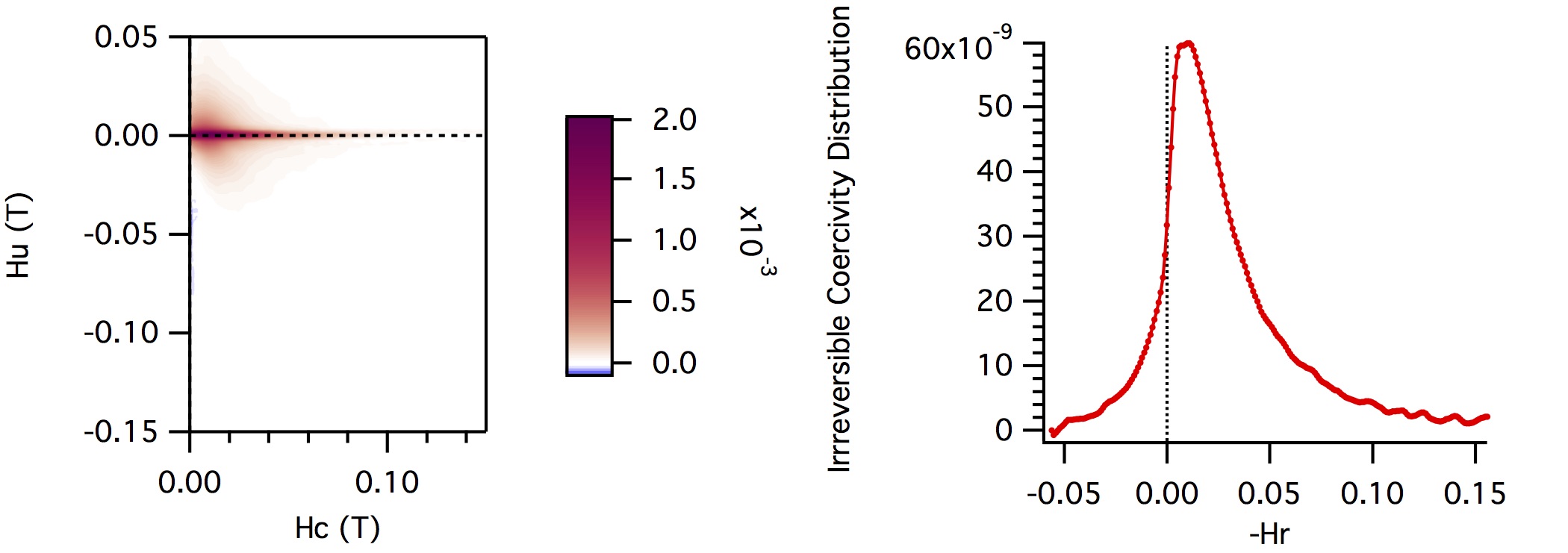FORCinel minor update 2.04
I posted a minor update to FORCinel (version 2.04). The main new feature is the ability to calculate the Irreversible Coercivity Distribution. Any change in magnetisation as a function of field can be described as a combination of reversible processes (e.g. moment rotation) and irreversible processes (i.e. switching). The Irreversible Coercivity Distribution plots the irreversible contribution to the magnetisation change that occurs between successive FORCs. The sum of all the irreversible magnetisation changes is equal to the integral of the FORC diagram, and is a useful quantity for normalisation purposes. A good use of the Irreversible Coercivity Distribution is to see at what reversal field irreversible magnetisation first appears. This value can help as a guide to the choice of maximum Hu in the FORC acquisition. In the example below, irreversible magnetisation first appears at -Hr = -0.05 (i.e. Hr = 0.05), meaning that the upper limit of the acquisition space should extend to at least Hu = 0.05 in order to capture all the FORC signal.

Note that the first onset of irreversible magnetisation occurs close to a the maximum reversal field (Hr ~ 0.05), indicating that we chose an appropriate value for Hu during the acquisition, which captures all the likely FORC signal (yay!).
The feature currently works only with FORCinel processed data. Results may be adversely affected by the first-point measurement artefact, so it is recommended that you choose the “Remove First and Last Point Artefact” option in the FORCinextras menu before calculating the Irreversible Coercivity Distribution. The Irreversible Coercivity Distribution can be calculated from the FORCinel menu by choosing the “Reversible+Irreversible Ridge” option.
Rich
